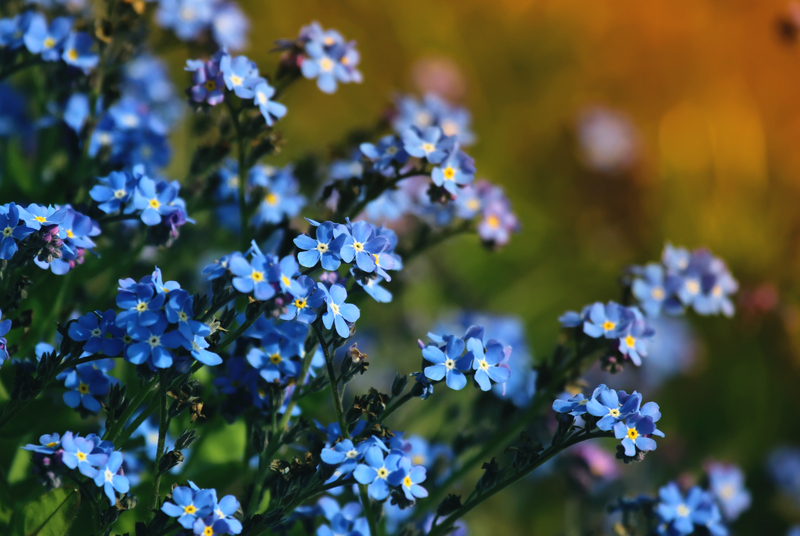Transform Your Outdoor Space with 9 UK-Friendly Ground Covers
Posted on 15/05/2025

Transform Your Outdoor Space with 9 UK-Friendly Ground Covers
Creating a lush, inviting outdoor space doesn't have to be a challenge! By incorporating ground covers that thrive in the UK climate, you can easily transform your garden or yard into a picturesque retreat. In this article, we'll explore nine outstanding ground covers that require minimal maintenance and add vibrant beauty to your landscape.
The Benefits of Ground Covers
Ground covers are more than just decorative elements. They offer a variety of practical advantages:
- Weed suppression: Ground covers form a dense canopy that blocks sunlight and prevents weeds from growing.
- Soil erosion control: Their roots help bind the soil, reducing erosion and loss of topsoil.
- Low maintenance: Once established, they require minimal care, saving you time and effort.
- Improved biodiversity: Ground covers provide habitat and food for insects and other wildlife.
- Aesthetic appeal: With a wide range of colors, textures, and forms, they can greatly enhance the visual appeal of your landscape.
Choosing the Right Ground Cover
When selecting a ground cover, consider factors like light exposure, soil type, and intended aesthetic. Each plant has its own unique set of requirements and characteristics, so find one that fits best with your landscape needs and local climate.
Top 9 Ground Covers for UK Gardens
1. Thyme (Thymus spp.)
Thyme not only excels as a culinary herb but also shines as an ornamental ground cover. It is drought-tolerant, requires little maintenance, and emissions a lovely fragrance when walked upon. The variations of thyme offer leaves in shades of green, silver, and even bronze, making it a versatile choice for kneeler paths and rock gardens.
2. Creeping Jenny (Lysimachia nummularia)
With its bright, golden-green foliage, Creeping Jenny makes a striking contrast in any garden bed. Its long, cascading habit adds an attractive waterfall-like effect to pots and walls. This plant thrives in both sun and partial shade.
3. Periwinkle (Vinca minor)
A tough and reliable choice, Periwinkle features glossy evergreen leaves and beautiful blue or white star-shaped flowers in spring and summer. It tolerates shade and is perfect for planting under trees or in overgrown areas.
4. Bugleweed (Ajuga reptans)
This ground cover is perfect for shady patches, as its striking, deep blue flowers and variegated foliage brighten the gloomiest corners. Bugleweed spreads quickly, making it excellent for covering large bare areas in woodlands or under shrubs.
5. Sea Thrift (Armeria maritima)
The pink pom-pom flowers and slender evergreen leaves of Sea Thrift add charm to coastal gardens or alpine arrangements. This plant is salt-tolerant and grows well in poor soil conditions.
6. Snow-in-Summer (Cerastium tomentosum)
Snow-in-Summer is so named for its profusion of white blooms that appear in late spring and early summer, blanketing the area like fresh snow. Its silvery foliage remains attractive throughout the growing season.
7. Lamb's Ear (Stachys byzantina)
Lamb's Ear is renowned for its soft, woolly leaves, which add an interesting texture. Ideal for sunny spots, it inhibits weeds and requiring very little water once established.
8. Sweet Woodruff (Galium odoratum)
Sweet Woodruff produces whorled foliage and tiny, white blossoms. Its crushed leaves emit a delightful fragrance, adding sensory pleasure to shade gardens and woodland areas.
9. Chamomile (Chamaemelum nobile)
Well-known as a herbal tea ingredient, Chamomile introduces a beautiful touch to gardens with its dainty daisies and apple-scented foliage. Handles foot traffic well and flourishes in sunny spots.
Planting and Maintenance Tips
Implementing your ground covers effectively requires some forethought and strategic planning. Here are some tips to ensure success:
- Soil preparation: Remove weeds, debris, and excess vegetation before planting. Enrich the soil with compost to provide nutrients.
- Plant spacing: Consider the expected mature size of your ground cover plants. Plan sufficient spacing for healthy growth and coverage.
- Mulching: Use mulch to suppress weeds and retain moisture as new plants establish themselves.
- Watering: Ensure newly planted ground covers receive adequate water until established. Adjust watering according to seasonal rainfall.
- Trimming: If needed, light pruning encourages fuller growth and maintains tidy borders.
Conclusion: Cultivating Your Green Carpet
Incorporating one or more of these ground covers can significantly enhance your outdoor living space and reduce garden maintenance. Selecting the right species for your environmental conditions is key to achieving a lush and healthy ground cover display. Start small, experiment with different textures, and soon your garden will boast a beautifully carpeted landscape, perfect for relaxation and enjoyment.




